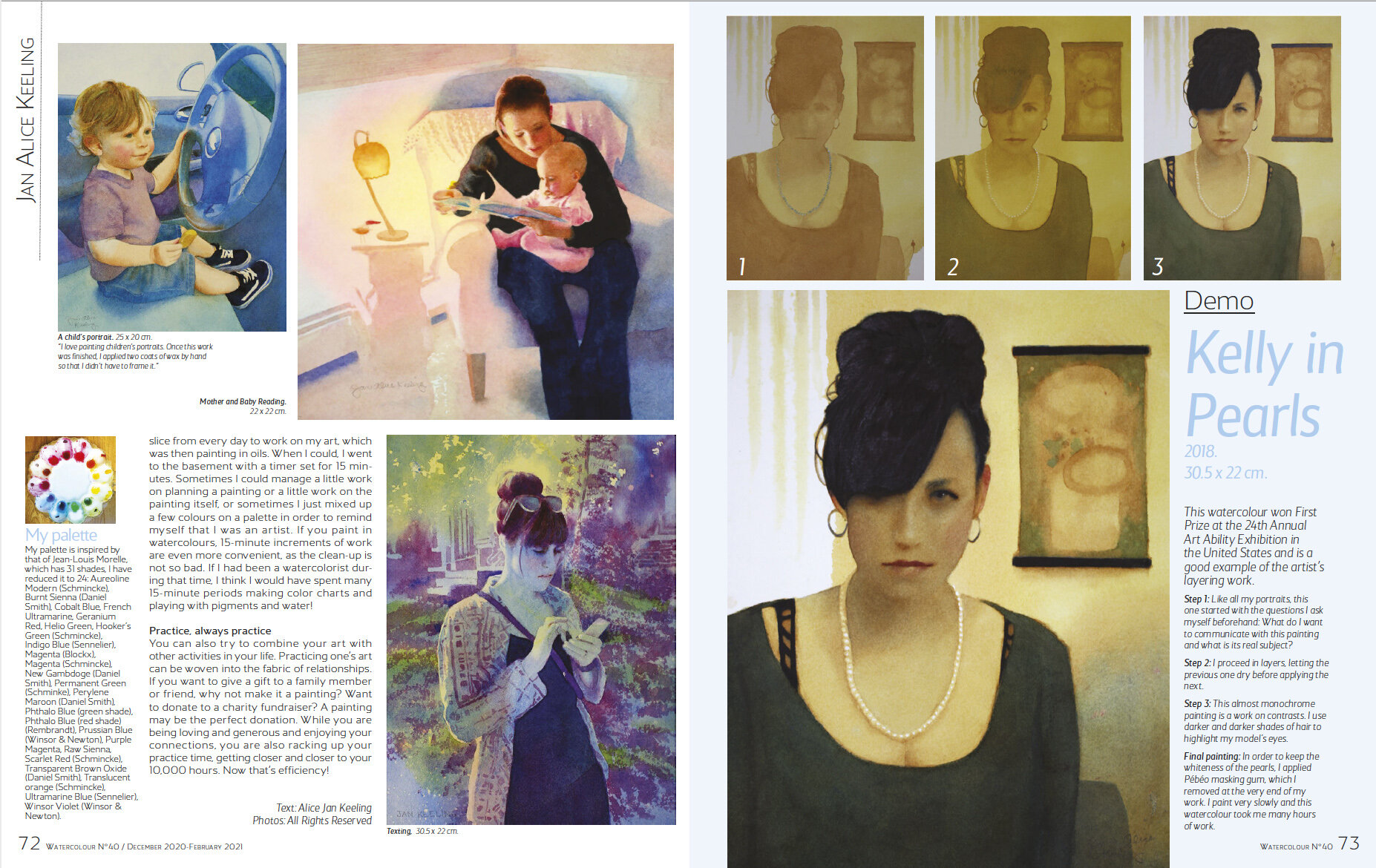Making the Most of Your Online Art: An Expert’s Advice
Cover of 40th issue of The Art of Watercolour
The Facebook message read: ”My name is Laurent Benoist and I am a journalist for The Art of Watercolour magazine. I’m contacting you because we would very much like to run an article on your paintings in the next issue.”
When I received the message, I thought: Can this be real? We artists often hear warnings about scammers who contact us online with schemes designed to extract money from us. Many of us have received such fraudulent offers. But, as I discovered, not all out-of-the-blue offers are scams.
After the article was published, I contacted Laurent Benoist. I wanted to know what he looks for when searching for an artist to cover in the magazine, so I could tell my artist friends. He told me: “We have several ways of finding artists for our magazines: social media, especially Facebook and Instagram; artists’ and galleries’ websites; word of mouth, such as one artist mentioning another as a source of inspiration; and exhibitions, of course. Due to travel restrictions and most exhibitions being canceled, I relied more than ever on social media and the internet in 2020.
Pages 70 -71, The Art of Watercolour, 40th issue
“Social media and websites are, in my opinion, complementary,” he continued. “Facebook and Instagram are good for discovering new artists. And because some artists may have only one or two ‘good paintings,’ I look at a website to make sure the artist has a relevant and interesting body of work. I actually find websites to be more useful when choosing artists for a magazine, as the paintings are more often than not sorted out according to year of production, technique, subject, and so on—although there are some artists who can be rigorous in the way they present their work on Facebook!”
“Finally, I always find it very interesting when an artist has a blog, as it means he or she is articulate about their approach to painting (which is not to say that artists who do not share their thoughts on the Internet are less articulate). I usually do not use the exact blog content, but it can inspire me to ask questions that the artist will find relevant, and if the artist’s answers are too short, the article can always be enriched with info from the blog.”
Pages 72 -73, The Art of Watercolour, 40th issue
Benoist added: “Another piece of advice: Recent smartphones take great pictures (better quality than digital cameras from ten years ago), so much so that they can be published in paper magazines. Pictures are best taken outdoors with overcast weather (i.e., no shadows from sunlight).”
An Artist’s Online Checklist
Keep your website, Instagram, Facebook page, and other social media up-to-date.
Post good-quality photos of your artwork.
Make sure you display a large number of high-quality paintings, with the best ones front and center.
Present your paintings in an organized way, divided by year of production, medium, subject, or some other way.
If you like to blog, blog!
Final Cautions
Should you get an online offer from a journal or other publication, do some research to make sure the publication is legit and the journalist is on the masthead. Never, ever send money to someone as a condition of being published, exhibited, or purchased.
Follow these cautions and you are less likely to have a terrible experience and more likely to have a delightful experience like the one I had!



